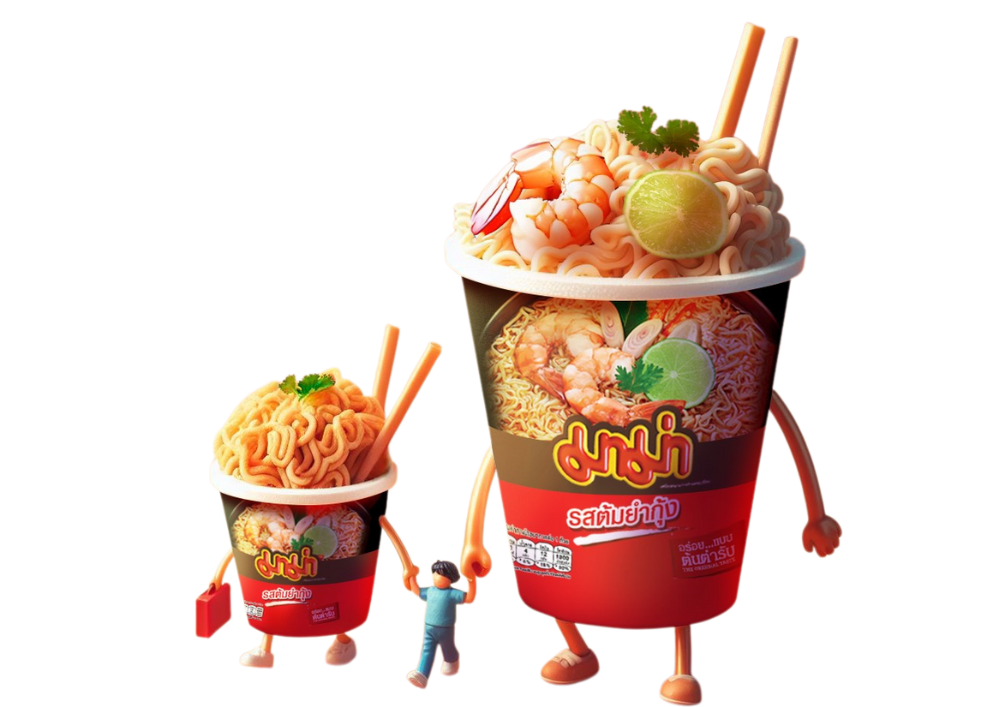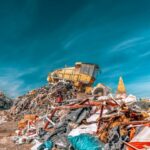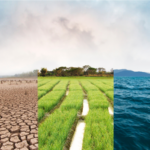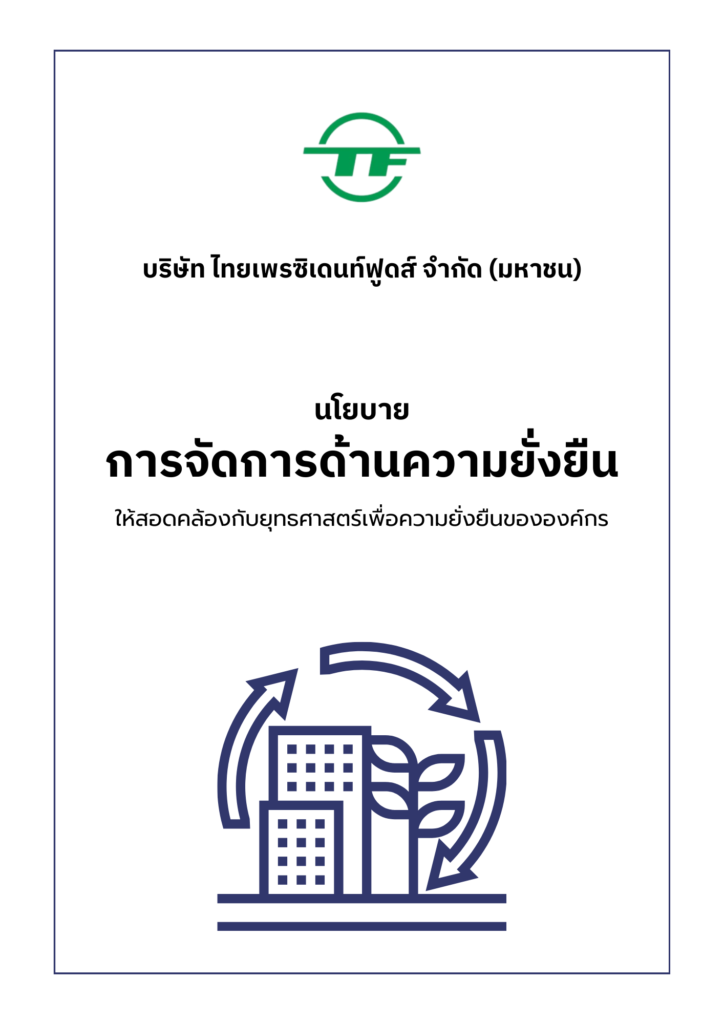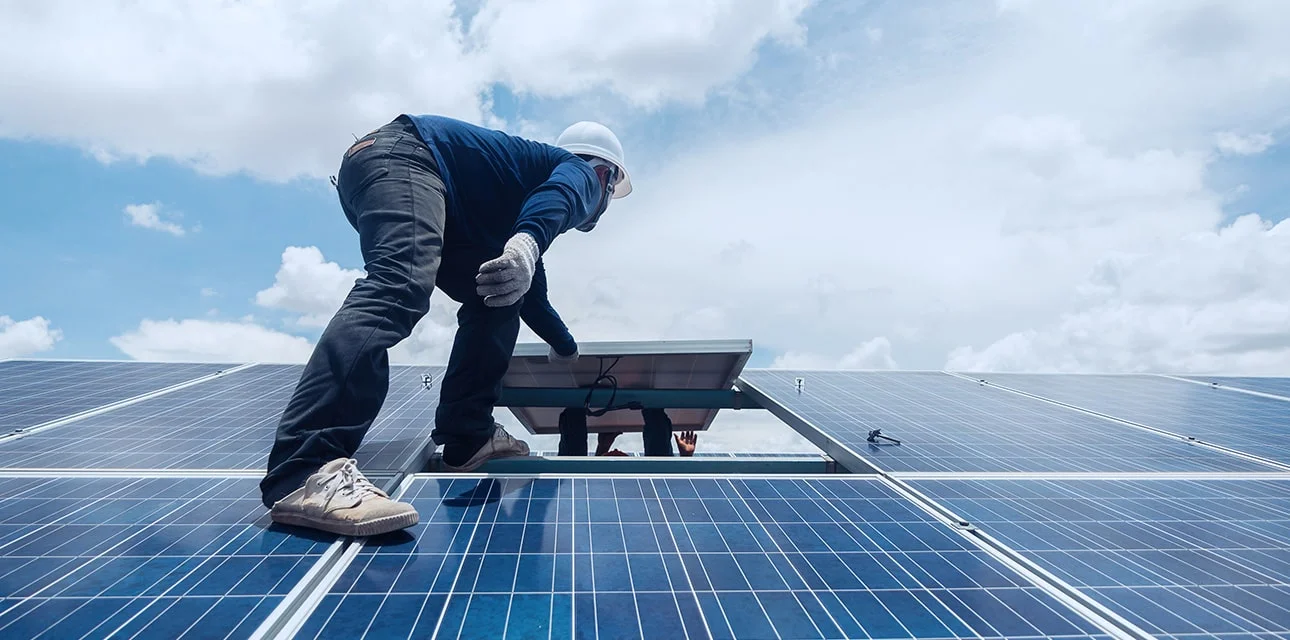
Expansion of the Solar Cell Project at the Ratchaburi Plant.
The company is committed to leading the industry in reducing the impacts of climate change through transparent operations, investment in sustainable technologies, and fostering collaboration with various sectors, including government, private enterprises, and international organizations, to drive sustainable systemic change. Our objectives include:
- Continue to decrease greenhouse gas emissions and strive for carbon neutrality: Establish both short-term and long-term objectives to reducing greenhouse gas emissions while enhancing production processes and operations in accordance with the principles of the circular economy.
- Promote the implementation of carbon sequestration technologies, including mangrove restoration through the Blue Carbon project and environmental conservation initiatives under the Save the Dugong project, to enhance carbon absorption capacity and sustain the balance of marine ecosystems.
Goals and Performance for 2024
- Goal
In 2050, the company is committed to achieving Carbon Neutrality
- Performance
Management Approach
1.Mitigating impacts and enhancing carbon absorption
Mangrove and Aquatic Ecosystem Restoration - Blue Carbon Project: Implement project to restore and conserve mangrove forests and aquatic ecosystems, which are crucial regional carbon sinks.
Rare Marine Species Conservation - Save the Dugong Project: Promote the conservation of endangered marine species while simultaneously restoring their food sources and habitats.
Enhancing Biodiversity: Protect seagrass habitats, which serve as vital marine carbon sinks (Blue Carbon Sinks), to support carbon absorption and ecological balance.
2. Reducing Carbon Footprint Product (CFP) and Managing Carbon Footprint Organization (CFO)
Establishing CFP and CFO Evaluation Systems: Develop assessment systems to analyze and identify greenhouse gas emission sources across all production processes, setting concrete short- and long-term emission reduction targets.
Data-Driven Planning: Utilize assessment results to optimize production processes, minimize resource losses, and enhance energy efficiency.
3. Minimizing energy consumption and promoting renewable energy
Enhancing Production Efficiency: Implement advanced technologies to reduce energy consumption and carbon emissions at every stage of production process.
Supporting Renewable Energy: Invest in solar power systems and clean energy technologies within factories, with long-term goals to expand renewable energy adoption.
4. Transparency in Data Reporting
Disclosure of GHG emissions data in its entirety: Detailed reports on Scope 1 and Scope 2 emissions, with intentions to extend to Scope 3.
5. Additional Approach
Building Collaborative Networks: Engage with public and private organizations, such as industry councils, to develop projects that contribute to sustainable greenhouse gas reduction.
Evaluating Carbon Offset Impacts: Assess the economic and industrial impacts of carbon offset initiatives at the regional level to establish a balanced approach between development and carbon reduction.
6. Development and Investment in Sustainable Technologies
Mangrove restoration: Expand mangrove habitats to enhance carbon absorption and sustain the equilibrium of the marine ecosystem.
Developing Carbon Capture Technology Apply advanced technologies through the Blue Carbon project in high-potential areas to maximize carbon sequestration.
Invest in renewable energy systems, such as solar rooftops, to enhance the eco-friendly production process, and implement Smart Energy Management system to regulate and improve energy efficiency across all process.
7. Carbon Footprint Management
Carbon Reduction Potential Assessment: Utilize information from CFP (Carbon Footprint of Products) and CFO (Carbon Footprint of Organization) to analyze carbon emission sources throughout all production processes.
Transparent Reporting: Disclose carbon reduction data openly and continuously refine action plans to align with sustainability goals.
Utilize the CFP and CFO assessment outcomes to enhance production processes, thereby minimizing carbon emissions and augmenting energy efficiency.
8. Minimizing energy consumption and advocating for clean energy
Investment in Renewable Energy: Install solar cell systems in manufacturing facilities and promote clean energy usage in production processes. Develop a long-term strategy for expanding renewable energy adoption.
Enhancing Energy Efficiency: Implement energy-saving equipment and production technologies, such as Steam Ejectors, Absorption Chillers, and improved thermal insulation practices.
The Smart Energy Management Project: Implements automated energy control systems, including motion sensors and real-time energy monitoring systems.
9. Fostering understanding and awareness within the organization
Employee Training Programs: Develop and implement training sessions to enhance employee understanding of climate change and its impacts.
Promoting a Culture of Sustainability: Foster a culture of sustainability among employees across all levels.
Sustainability Engagement Initiatives: Organize programs such as recycling projects, ESG DNA events, and Environment Week to promote a sustainability-driven corporate culture.
10. Personal Training and Development
The Company has organized training to enhance knowledge and understanding of environmental and greenhouse gas management across all levels. This includes courses on Carbon Footprint Management (CFO), energy conservation, waste management, emergency response, and safe operations, as well as improving access to information through various channels such as the intranet, email, and ongoing exhibitions.
11. Planning for carbon footprint assessment
In 2024, the Company undertook a comprehensive review and evaluation of the Corporate Carbon Footprint (CFO) in partnership with TGO-certified companies, including ECEE CO., LTD., and broadened the assessment's scope to encompass additional units within the organization.
12. Enhancement of training and activities
The company seeks to enhance employee engagement in activities in 2024 compared to the previous year, emphasizing initiatives that foster learning and involvement, including energy conservation projects, waste reduction efforts, and improvements in resource efficiency.
Training
Examples of training on Carbon Footprint Products (CFP) and Carbon Footprint Organizations (CFO) for employees in relevant departments, including production Department and environmental Department
CFP (Carbon Footprint Product):
Training on December 18, 2024, from 9:00 a.m. to 4:30 p.m.
.
CFO (Carbon Footprint for Organization)
Training on December 24, 2024, from 9:00 a.m. to 4:30 p.m.
Certified Carbon footprint Product
Operations and performance outcomes for 2024
In 2024, the company implemented various measures to reduce energy consumption and greenhouse gas emissions as part of its sustainability goals and commitment to environmentally friendly business practices. The following outlines key initiatives undertaken by the company, along with the expected outcomes in terms of energy savings and greenhouse gas emission reductions across its facilities::


